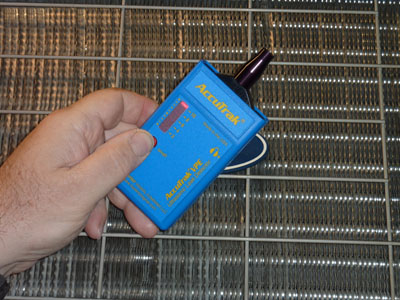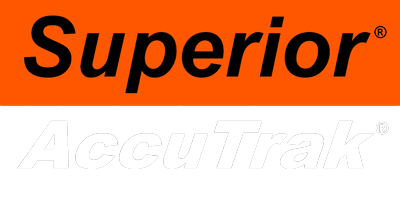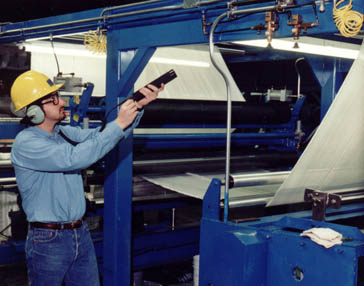Ultrasonics: Let The Sound of Leaks Help You Find Them
The past several years have brought great change to leak detection. Thousands of contractors now have ultrasonic leak detectors, but when and how can you use ultrasonics most effectively?
There's no denying it, refrigerant leaks are a headache! It's just a fact of life. We've all spent long, frustrating hours searching for leaks. Now, pain relief is available, thanks to new methods that can find leaks more quickly. Even with modern technologies, however advanced they become, skill and intelligence on the part of the technician using them will always be required. A specific leak detection technology can be very effective in certain situations, but useless under other conditions. Its important that you understand the capabilities as well as the limitations of the leak detection options available to you. This is the secret to relieving those headaches.
Types of Leak Detectors
There are many types of leak detectors currently being used in a variety of industries. They range in price from over a hundred thousand dollars for a mass spectrometer, to just pennies for a few drops of soap solution. The most popular methods being used in HVACR are soap solutions, refrigerant sensing instruments (electronic "sniffers"), fluorescent dye lamps, and ultrasonic leak detectors. All are very effective under the right circumstances. Of course, leak detector manufacturers want to sell you their products, so they'll make exciting claims that theirs are the best, and the only method that should be used for finding refrigerant leaks. While certainly an electronic "sniffer," for example, may offer features that make it better than competitors' models, it'll still have a difficult time locating leaks under certain conditions (i.e., a windy rooftop). It's just the nature of this technology. All the available technologies have situations where they're most effective, and others when they're not so effective. When faced with these problems, educated technicians reach for devices that operate using different technologies. These devices are less hindered by the problems affecting other units that in the past may have been their first choice.
"When the instrument detects the ultrasonic sound of a leak it translates it to a lower frequency range that you can hear and interpret through a headset."
Ultrasonic Leak Detectors
T his equipment has generated a lot of interest in the HVACR industry over the past few years. They're growing in popularity because of their versatility. Since ultrasonic leak detectors detect the sound of a leak, they find any type of gas leaking, even vacuum leaks. They're also helpful for testing steam traps, ductwork, bearings, and refrigerator/freezer door gaskets. Ultrasonic leak detectors listen for leaks; they don't detect the presence of a gas. For example, you're probably familiar with the sound air makes as it leaks from a tire. The sound that your ear can
his equipment has generated a lot of interest in the HVACR industry over the past few years. They're growing in popularity because of their versatility. Since ultrasonic leak detectors detect the sound of a leak, they find any type of gas leaking, even vacuum leaks. They're also helpful for testing steam traps, ductwork, bearings, and refrigerator/freezer door gaskets. Ultrasonic leak detectors listen for leaks; they don't detect the presence of a gas. For example, you're probably familiar with the sound air makes as it leaks from a tire. The sound that your ear can
detect in this situation is only about one-third of the actual spectrum of sound that exists. Most of the sound emitted from very small leaks is in the ultrasonic range. This is well above the detection limits of the human ear, but within the range of an ultrasonic leak detector, which can not only detect the leak but also trace it to its source. Vacuum leaks and the new refrigerants emit ultrasonic sound as clearly as the old refrigerants. Even nitrogen leaks emit sound. This principle of operation makes it possible to detect leaks in windy, contaminated, or gas saturated areas. Even when the leaking equipment is under vacuum. When the instrument detects the ultrasonic sound of a leak, it translates it to a lower frequency range that you can hear and interpret through a headset. Even the sound of a leak deep within a coil, and far out of sight, can be detected with an ultrasonic instrument, although the closer you place the sensor to the source of the sound, the better your chances of detecting it. You can' compare it to going to a concert. The closer you are to the band or the speakers, the better you'll hear.
What about sensitivity?
Because ultrasonic leak detectors detect sound and not refrigerant, it's impossible to state their sensitivity in terms of ounces per year. The amount of turbulent gas flow generated by a particular leak determines the detection capabilities of ultrasonic detectors. For example, a piece of tubing left to freely exhaust into the atmosphere won't generate ultrasound, if the volume of gas through it isn't enough for turbulence to take place. Yet the same pressure behind an orifice (leak) size of only .004 in. can be heard from many feet away! Think about what happens when you whistle. Changing the shape of your lips and tongue, and blowing differently creates different sounds. Now compare this to a refrigerant leak. Not much different. A wide variety of sounds, and sound frequencies, can be created by different shaped cracks and holes. Different pressures will generate a wide variety of sounds and sound frequencies. In fact, a large leak (.10 in) and a smaller leak (.004 in), side by side, under the same pressure, will create two entirely different tones. Although ultrasonic detectors can detect pinhole leaks of less than 3 PSI, a minimum leak rate of .5 oz/yr. can't be traced with ultrasonics. At a flow rate that small, it would be unlikely you'd even be called to service the unit, as it would take approximately 32 years to lose 1 lb. of refrigerant. Also, remember when a manufacturer states that their detector can detect this leak rate, their detector was tested in a controlled laboratory environment, and not in the windy or possibly contaminated areas you work in. Under these conditions, it's common to find a leak faster with an ultrasonic detector than with a sniffer.
Don't misunderstand, traditional methods are certainly very effective in many applications and shouldn't be replaced. Ultrasonic detection, however, is much more effective in situations where some of the methods can't do the job.
Background Noise
Background noise was once more of a problem for ultrasonic detectors than it is today. Early generations of these instruments indicated a leak by imitating the sound in the form of a beep or squeal, making it difficult to determine what was being detected. A good ultrasonic detector is capable of producing a true reproduction of the leak itself. The rushing sound of the gas should be clearly identifiable when compared to normal operational sounds. Don't settle for one that "beeps" or "squeals." This will make it difficult to discriminate the actual leak sound from other background noise. Before using an ultrasonic leak detector for the first time, be sure you know what to listen for. Create a legal leak using an air gun, or even a room deodorizer, and listen to the sound. Then listen to a compressor or fan motor at the same time. With a good ultrasonic detector, you'll observe a noticeable difference in the sounds, and be able to distinguish the unique -characteristics of each. The sound of a vacuum leak has a very close resemblance to an external leak. Gas or fluid flow through restrictions in pipes may produce a rushing sound similar to a leak, but the most intense signal is at the point of an orifice or opening. Most ultrasonic detectors have a sensitivity adjustment that will diminish less intense sounds and let you concentrate on the dominant ones: the leaks.
When you're faced with a leak detection problem, you need to take a minute and evaluate the system, and the environmental factors that may affect the leak detection process. Ask yourself, "Is it windy? Are there contaminants that could cause false alarms? How much time is available? Is the leak within a direct line of sight, or is a method needed that can detect the leak from a greater distance? Does the unit need to be recovered, and should it be leak tested while under vacuum?" These are all questions you must consider before choosing a leak detection technique. There is nothing wrong with less sophisticated methods as long as they work, but you need to know and understand the capabilities, as well as the limitations, of whatever method you choose.


